If you have tried content marketing before but struck out, most likely you aren’t executing it correctly and your leads are not nurtured. Combining a strategy that maps the buyers journey along with the use of marketing automation software should lead to an increase in both lead quality and lead quantity.
Click here to read the full Hangout on Air transcription
Betsy: Good morning and thank you to everyone joining us on this call today. My name is Betsy Crozier and I am here with Robb Bailey, the co-founder and CEO of PageLadder Incorporated, a San Diego based inbound marketing firm. Thank you for joining me Robb.
Robb: Oh, thanks for having me, Betsy. Appreciate it.
Betsy: Robb, if it’s okay with you, I’d like to take about ten minutes of your time or so and talk a little bit about lead nurturing and mapping the buyer’s journey.
Robb: Yeah. Absolutely.
Betsy: So to start the conversation, I think we both have seen a stat stating that nurtured leads make 47% larger purchases than non-nurtured leads.
Robb: Mm-hmm.
Betsy: You’re familiar with that one, right?
Robb: Yeah. We were just discussing a little bit about why that was so.
Betsy: Perfect. So I was hoping you could talk about that stat and see how it revolves around mapping your buyer’s journey and what that process really looks like and why you do see such greater success when you nurture those leads.
Robb: Yeah, definitely. So that’s really compelling, because what I think a lot of people have websites for in the first place is to have their website be their best sales person. Although, I would say that most business owners look at their website and they’re like, “Ugh, it’s the bane of my existence,” right?
Betsy: Absolutely.
Robb: They’re not really using it as their best sales tool, at least not yet. But it’s definitely possible to do. You’ll hear me say this over and over again, one of the things that we really encourage our clients to do is marry their marketing and sales and use the website as a sales assist tool and get their sales teams active and talking about the content on the website with the clients when they’re speaking with them over the phone or meeting with them in person. And the reason that we do that, encourage that, is because — and this ties into this stat a little bit — when there’s a need for information in order to make a buying decision, the content on your website is probably the most important piece of the pie. Because what happens is the person who’s kicking the tires and looking around and talking with your sales team, they don’t understand the topics that you’re an expert at nearly as well as your sales team, as you are, as the owner of the company is.
Betsy: Absolutely.
Robb: And so the better that you can communicate that stuff online, the better they can then take that information and go home and read it, or re-read it, or maybe read it when they’re not as distracted or they have more time. Or, this is another thing that happens a lot, they have to justify it to somebody else. They’re like, “Oh, I get it. I get it enough to understand it and make a decision, but I have to justify it to my colleague, or my boss, or this or that.” And so, all those things lend to creating a more educated buyer overall. I think anyone’s whose got a longer sales cycle would agree, that the more you can educated the buyer about something, the more likely they are to understand your product and service. And that’s why they spend more when they get nurtured over a longer period of time. So, when you talk about a non-nurtured lead, that just means that that person has had fewer touches with you or your brand, fewer opportunities to get educated, they’ve digested less information, they maybe don’t understand your process or your product as well as they could. So, all those things affect buying.
Betsy: Is it safe to assume then that nurtured leads are actually more sales ready overall?
Robb: Oh, absolutely. Yeah, that’s the point of nurturing the leads, is to create more sales ready leads, right? So, when you talk about your sales funnel, the two metrics that you want to improve the most are your opportunities and your sales, or we call this closed, you close as a customer, right? So when you close them as a customer, in our industry we call that closing the loop. So that person went from hearing about your company, that [isn’t] some information on your site, to learning what the differences are between you and all your competitors out there. And then finally getting down to raising their hand and saying, “Yes, I’m ready to be contacted by sales, or pull the trigger, or go ahead and buy something.” What happens after that is you look at the next step down and you go, “Okay, well regardless of what action they took, based upon my industry, I have an opportunity to fulfill some work for them or book some business with them.” And then, only finally once you’ve done that with them can you close them out as a customer. And what nurturing the leads does is it creates more sales ready opportunities, which is the step right before the chance where you get to speak with them directly, or interact with them directly, or fulfill on the order they just purchased from you. So, those two are so close together. It’s a really fine line. If you can improve the conversion rate from the sales qualified lead to the sales opportunity, even just by 10%, for some companies that’s tens of millions of dollars, right?
Betsy: Yeah.
Robb: And then sometimes that’s only a handful of interactions. So it might just be five more opportunities. That’s not typical, but for high enough per transaction value companies, that’s definitely possible. We’ve seen some cases where it’s been like that.
Betsy: So what do you think the process looks like when you’re mapping that buyer’s journey to get them to the point where they’re a nurtured lead? How do you establish that?
Robb: That’s a great question. So, what does mapping the buyer’s journey mean, right? Mapping the buyer’s journey just means that before they get to that sales qualified lead segment, where they’ve raised their hand and said, “Yes, I want to speak with someone from your company,” you basically want to map out a path starting with the first visit on your website that they take, the first action they take. And you want to map that journey that they go through when they’re digesting the information all the way from just information qualify, which means they just need helpful answers to their questions, all the way down through the marketing qualified stage, which is where they’re saying, “Okay, I’m considering service providers. So I need to know the differences between what you guys have, whatever everyone else out their has.” So it’s another great educational opportunity. It’s a very powerful sales tactic to talk about points of difference, right? That happens in all sales. What’s the difference between Verizon and AT&T? Difference between Honda and Toyota? Difference between Nike and Adidas, right?
Betsy: Yeah, absolutely.
Robb: So, what you’re try to do is you take this buyer’s journey and you try to optimize it. So instead of saying, “Okay, our marketing department is full of smart people and maybe we have an agency that we’re working with like PageLadder to help with inbound marketing. Let’s put our heads together and decide what we think, as marketers, is a good message to push out there.” Instead of doing that, mapping the buyer’s journey is way more customer-centric. So what we do is we say, “Okay, we’re going to marry our sales process, based on all of the things that you know about your customers from talking with them day in and day out for however many years you’ve been in business. We’re going to do our best to map out what you guys think are the three main stages that your customers are going through.” And this is all before they contact your sales department, right? So, they ask these types of informational questions. In other words, “I’m not ready to buy, I just need helpful answers.” So we write blog post content to answer those questions. They say, “Well what are the differences between your brand and the next guy down?” So we make a white paper that basically explains the differences between our company and all the rest of the competitors out there. And so, mapping the buyer’s journey is looking through that from the customer’s eyes and then publishing all this content and seeing where they get stuck in that journey. And this happens almost every client we get. 99% of our client base has never done inbound marketing before, so we have to start with our best guess. And then we can actually see, based on their behaviors, like, “Oh, you know what? Out of 100 people, only one person took an action to go to that next step in the sales process, in the buyer’s journey. So, we might want to rethink what our value proposition is as a company, or at least just for this maybe one product or one persona, because we’re not striking the chord well enough to get them to take that next step.” For example, we have a client who’s an industrial manufacturer and they have a very, very technical product. There’s a lot of specs involved. It’s very architecture and engineer heavy. There’s a lot of acronyms, and [inaudible 09:34], and graphs involved educating in the sales process. And one of the things that we found is that they really need a ton of information on the front end. 80% of their buyer’s journey is getting educated about what this product does and how it helps.
Betsy: Okay.
Robb: And that might be a four or five month period where they’re digesting all this information. And then finally at the very end, they just want a really quick comparison. It might only take 15, 30 minutes for them to understand, but that’s the middle of the [fall off] for the marketing qualified one. They’re just like, “Okay, well there’s a few players in this space. I just want to know the differences between them.” So that happens really fast and then they want to talk to sales right after that. To compare and contrast that, we have also seen other industries where people shoot through that process almost all in one day sometimes. Or they digest just one or two small pieces of informational content and then when they’re looking at providers it’s twice as long, right?
Betsy: Yeah.
Robb: So you have to customize their experience to play to where they’re at and what they want to see. And that’s how you can really move the needle with how many sales qualified leads you end up getting and more sales opportunities you get, is by making it customer-centric and having it based on their behavior, if that makes sense.
Betsy: Yeah. Is it safe to assume then that using marketing automation software plays heavily into this? Into finding the bottlenecks and to not just creating the buyer’s journey, but making sure you’re really optimizing it?
Robb: Yeah, absolutely. So the marketing automation is what customizes their experience. In other words, with inbound marketing, it’s much more of a pull than a push. So we’re pulling the person along based on them voluntarily moving through your sales funnel. So if they’re at the information stage and they want to stay there, they’ll keep digesting informational blog posts and whatnot for as long as they want to. And then when they’re ready to move to the next stage, which is like, “Hey, I need some help differentiating between service providers,” then they’ll go ahead and do that, right? But the marketing automation takes care of that for us. You have to set it up right. You have to have a plan and a strategy that mirrors the sales process in order to do all this, but the marketing automation direct feeds the appropriate email at the appropriate time based on where the person is at in the buying cycle. And it’s customized. So it’s, “Hey Robb, here’s another great blog post that answers a question that we always get. Here’s a link to the blog post. Hope you enjoy.” That’s one of the [inaudible 12:13] emails. But if someone moves past that stage, they’re not going to get those emails anymore. They’re going to get something that’s much more product-centric and brand-centric if they move to the next stage. It’s more of like, “Here’s a case study about how our product helped somebody who used our product instead of the other guy’s,” right?
Betsy: Yeah. Well it’s interesting. Correct me if I’m wrong, I think there’s a common misconception that using marketing automation software is for your benefit — so you’re getting better statistics, you’re leveraging your time by reducing the content — but there actually seems like there’s a huge front end application where it really, back to what you’re saying about it being customer-centric, allows you to really customize that content for the customer, delivered on a time schedule that they want.
Robb: Exactly. You hit the nail on the head. And that’s something that we’re passionate about over here. You might be able to go to a different inbound marketing agency and get a different story on that, but if you work with us, you have to be able to do it that way. You have to allow us to create a customer-centric campaign, because if you think about it, they’re the ones with the wallet.
Betsy: Yeah.
Robb: So, you should really be tailoring your online marketing to their wants and needs first and then introduce your agenda a little later. Your agenda should come secondary to theirs because, again, we’re not doing this just to be fancy and be trendy, we’re doing this to generate more sales. And the happier you can make the buyers through their buying journey, that becomes your selling process, right? So, I know that we’re making twice as many people happier on the front end, and that’s literally being tracked through our software. And we can see that more people are moving through the funnel, because we’re giving them what they want. And that’s how this stuff works. This is the age we live in today. People want to be well informed. They expect it to come to them when they want it and not a second before, not a minute after. So the better that you can cater that experience with these tools and these strategies, the more online leads you’re going to get. That’s just how it’s working today.
Betsy: Wonderful. Well Robb, I think that was hugely helpful. So to recap, I think we started with the nurtured leads make 47% larger purchases than non-nurtured leads. And I don’t think anything we said today negates that at all. It just drives the point home that it’s customer-centric and you’re really getting them sales ready.
Robb: Yeah, so there’s that stat, right? You get a better lead quality, that’s what that’s saying. If we’re getting ten opportunities a day, if we nurture our leads, we’ll probably be able to get the most out of those opportunities that we have, right?
Betsy: Yeah.
Robb: But the stat that we didn’t talk about today as much was you also get a higher volume of leads. So, if you’ve tried content marketing before and you haven’t had an increase in lead quality, which is a qualitative measure, right; and also the quantity, which is a quantitative measure. It does both of those things if you do it right. So, those are the two main things that you can achieve. If your content marketing campaign maps the buyer’s journey, it’s very easy to achieve that. If it doesn’t, if you’re putting your agenda first, it’s very easy to strike out.
Betsy: Excellent. Well Robb, this was hugely helpful. Thank you so much for your time. And for anyone who’s listening, if you want to know more about Robb or see some of these other Google hangouts, we do have them live at our blog. It’s pageladder.com/blog. Thanks so much, Robb.
Robb: Thanks for having me. Appreciate it.
What’s the Difference Between Nurtured and Non-Nurtured Leads?
Non-nurtured lead just means that that person has had:
- Fewer touches with you or your brand
- Fewer opportunities to get educated
- They have digested less information
- They maybe don’t understand your process or your product as well as they could
Why You Want Nurtured Leads
Nurtured leads make 47% larger purchases than non-nurtured leads. (Source: The Annuitas Group)
For many companies the person prospecting your potential product or services has to justify their decision to someone else. Yes they might get your offering enough to understand it and make a decision, but in many cases they might not have enough information to easily explain that difference and decision to their colleague, boss or spouse.
Anyone’s whose got a longer sales cycle would agree, that the more you can educated the buyer the more likely they are to understand your product and service. That’s why they spend more when they get nurtured over a longer period of time.
What Metrics do you Improve by Nurturing Your Leads
- Opportunities
- Sales
Goal of Lead Nurturing: Improve the conversion rate from sales qualified lead to sales opportunity
In this post from Hubspot, we see their database analysis that shows lead nurturing generates nearly 3 times more clicks than email blasts.
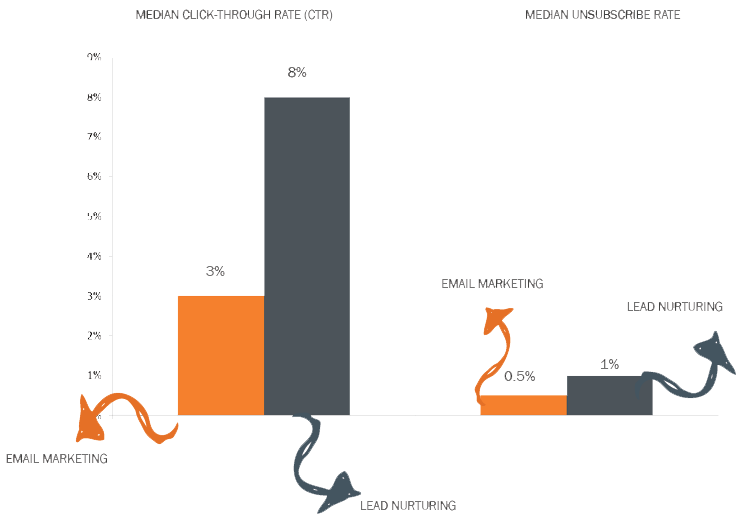
Hubspot analysis of 1,2121 companies using general email marketing and 1,241 companies using lead nurturing.
As the study above shows, lead nurturing emails generated an 8% CTR compared to general email sends, which generated just a 3% CTR.
Lead nurturing emails also has a slightly higher unsubscribe rate (1%) than individual email sends (.5%). This is actually an indicator that lead nurturing is effective at qualifying leads and eliminating people who are not interested in your company.
Effective implementation of lead nurturing works, and it’s a much more effective way to move your leads through the sales funnel than general email blasts.
How to Nurture a Lead to Close – Mapping Your Buyers Journey
Before customers get to the qualified lead segment, map a path for the customer starting with the first visit that they take and the first interaction they have.
That path should include information they are digesting at each stage:
Information Qualified Leads: Helpful answers to their questions
Marketing Qualified Leads: Showing how your services are different than other providers, showing the point of difference.
Sales Qualified Leads: Leads who your sales team has identified as worthy of a direct sales follow up
|
Mapping the Buyers Journey |
Other Marketing Strategy |
| Customer centric | Company centric |
| Mirrors the sales process (helpful to the customer) | Mirrors the company’s agenda (customer asked to take action that benefits company) |
| Delivers messaging congruent with the 3 main stages all humans go through when buying something from you | Distributes a “buy now” message regardless of what stage the buyer is at in the sales process |
| Answers the questions that your customers commonly ask | Typically announces company information irrelevant to buyer’s needs |
| Leads are nurtured with personalized content through each stage of the sales process | Leads are not nurtured nor is messaging personalized – repeatedly asked to buy or perform |
| Identifies where customers get stuck in their online journey | No idea what stages the customers are in when they receive the content |
| Customer has much higher chance of being “ready to buy” when first contact with sales occurs, understands value proposition well | Customer usually contacts sales with lots of unanswered questions, doesn’t understand value proposition well yet |
Adapt the Buyers Journey for Optimal Conversion
Mapping the buyer’s journey is looking through that from the customer’s eyes and then publishing all this content and seeing where they get stuck in that journey.
99% of our client base has never done inbound marketing before, so we have to start with our best guess. For example if out of 100 people, only 30 people took an action to go to that next step in the sales process, in the buyer’s journey, we need to rethink what our value proposition is as a company, or at least just for this one product or one persona.
The Buyers Journey can be Very Different for Each Industry
Businesses and industries are unique and mapping the buyers journey accounts for these difference.
| Client: Industrial Manufacturing | Client: Legal Services Niche |
||
| • Technical product • Architectural and Engineering Heavy • Lots of education in the sales process |
• Prospects Are Highly Motivated • Very Short Lead Cycle • Lots of education in Consideration Stage |
||
| What mapping the buyers journey identified: | What mapping the buyers journey identified: | ||
| • Customers need a lot of education at the top of the funnel • 80% of the buyers journey is about educating them about what the product does and how it helps • Up to a 5 month period when buyer is digesting all this information • Once they are educated, the middle of the sales funnel is just a quick comparison and they are sales ready • It might take only 10-20 minutes for them to move through the middle of the funnel before they are sales ready |
• Customers need limited education at the middle of the funnel • Quick awareness stage – because customers experience very strong stimulus before they ever hit client’s website • Customer digesting content for 24hr – just a couple of weeks • Checklist and toolkit offers more desirable than whitepapers, because these prospects are in a rush for an answer. • Conversion to sales opportunity is where the brand filtering happens. The prospect needs an attorney, it’s just a matter of which one is chosen • Quick sales commitment once the prospect engages with a bottom of funnel offer |
Inbound Marketing is a Pull Not a Push
What sets inbound marketing apart is that you are pulling the customer along based on them VOLUNTARILY MOVING THROUGH YOUR SALES FUNNEL. Marketing automation direct feeds the appropriate email at the appropriate time based on where the person is at in the buying cycle
Marketing automation achieves two main goals:
- Tailors your content strategy to customers wants and needs
- Introduces your agenda later
How does it achieve this:
- Helps create a customer centric campaign
- Delivers customized content for the customer
- Deliver content on their timeline
Information Stage
If the customer is at the information stage and they want to stay there, they will keep digesting informational blog posts for as long as they need.
The email does the following things well:
- Segmented list – this email goes to people registered for the webinar and attended.
- Second Person – this email is written in the second person with a focus on benefits for leads with helpful resources and the chance to get their questions answered.
- Clear, concise, brief message – Short message only about two sentences with bullet points to effectively communicate the information.
Marketing Stage
But if someone moves past the information stage, they’re not going to get the educational emails anymore and instead will get information about the point of difference in your product or services.
The email does the following things well:
- Smart List – triggers this campaign
- Content Offer – offers the lead useful content they can digest on their own time
- Point of Difference – in addition to helpful resources has an offer that shows the point of difference between competition
- Uses list names and emails – campaign is focused on moving a lead through the buying process
How Do you Know That Your Leads are Being Nurtured
- Customers questions are getting answered
- Customers are happier through their buying journey
- Software is tracking success of selling process / making your customers happy
- You can see an increase in opportunities
- You can see more customers moving down the sales funnel
The Bottom Line
Nurturing you leads by mapping your buyers journey will improve the conversion rate from sales qualified lead to sales opportunity. Paired with marketing automation tools, the delivery of content is done based on the customers wants and needs while also allowing you to track campaign success on the backend. By following this formula you should expect to see an increase in lead quality, lead quantity and be well on your way towards having more nurtured leads who are making larger purchases.
Get PageLadder Posts by Email
Robb Bailey
Latest posts by Robb Bailey (see all)
- 5 Reasons You Need to Look Beyond the Numbers in Your Digital Marketing - July 18, 2019
- 5 Easy Tweaks You Can Make to Consistently Land New Customers Online - July 18, 2019
- Types of Marketing Emails That Nobody Has Opened in Year - July 18, 2019

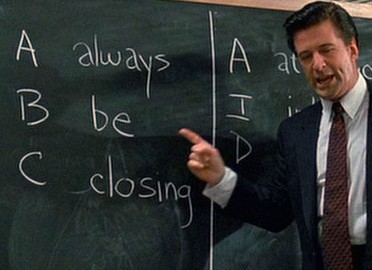
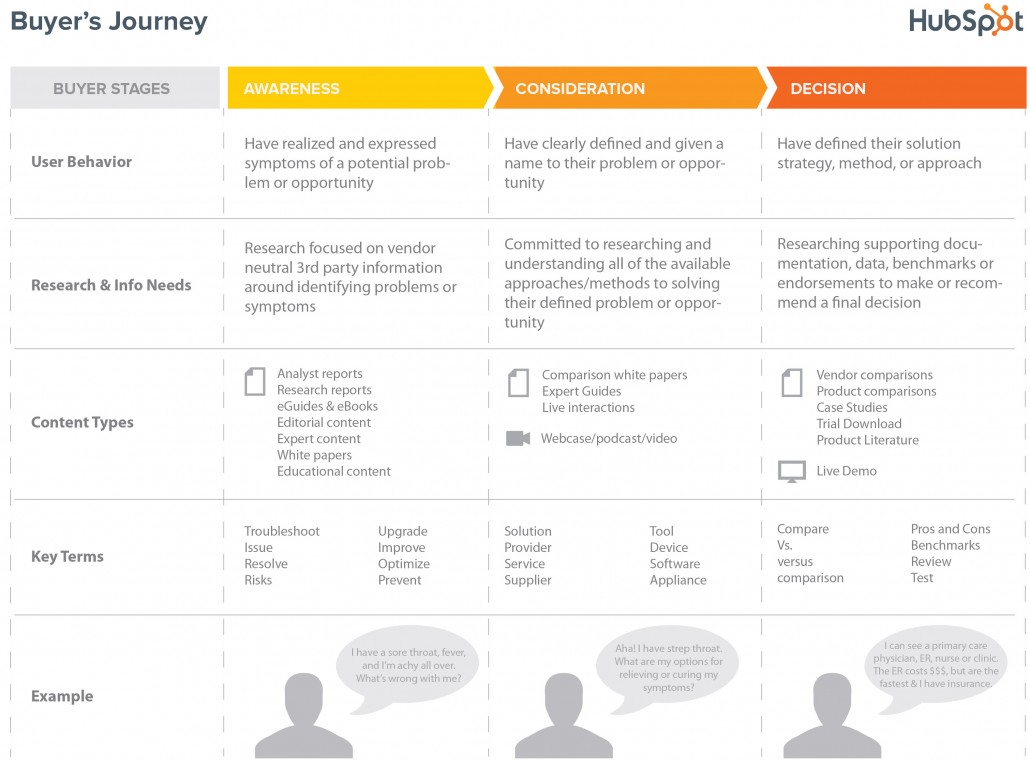
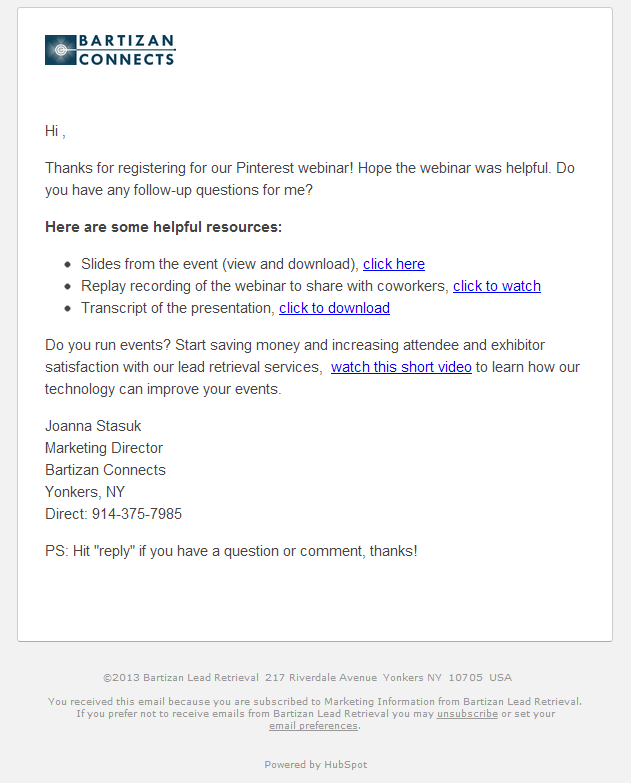
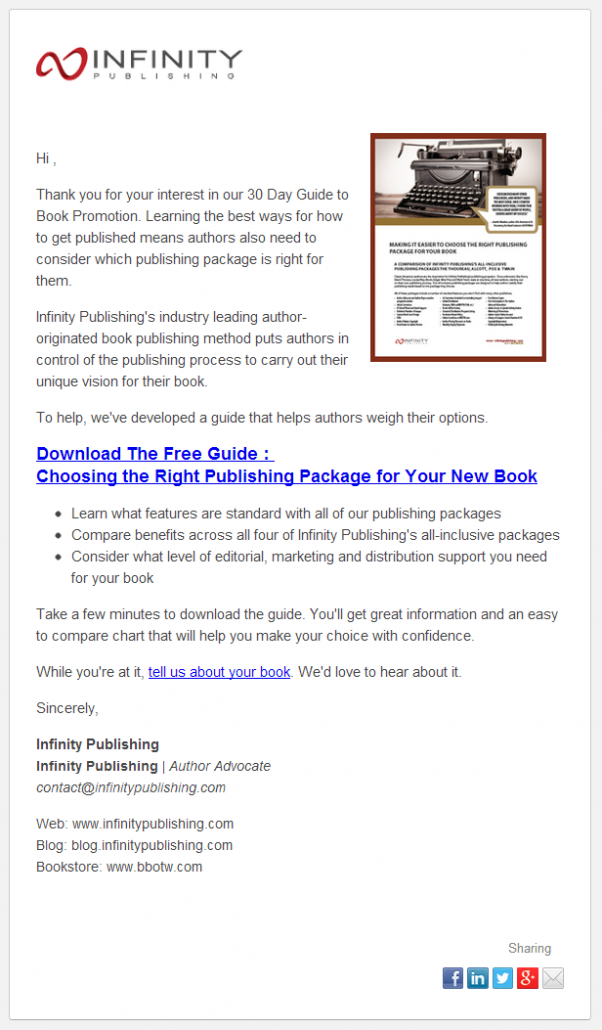


Leave a Reply
Want to join the discussion?Feel free to contribute!